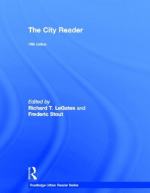
|
| Name: _________________________ | Period: ___________________ |
This test consists of 15 multiple choice questions and 5 short answer questions.
Multiple Choice Questions
1. In the Prologue, "How to Study Cities," LeGates writes that how many selections are included in The City Reader?
(a) 56.
(b) 53.
(c) 59.
(d) 52.
2. Richard LeGates writes in "How to Study Cities" that professors are trained in and expected to teach material within their respective what?
(a) Hobbies.
(b) Area's of amusement.
(c) Field of interest.
(d) Academic disciplines.
3. According to Ernest W. Burgess what is central to the expansion of cities?
(a) Decentralization.
(b) Wealth.
(c) Culture.
(d) The mayor's office.
4. The author of "The Polis" writes that the term polis refers to more of a what than the current "city"?
(a) Peace state.
(b) Autocratic state.
(c) Mosaic-state.
(d) Dictatorial state.
5. The author of "The Growth of the City: An Introduction to a Research Project" viewed the social growth and physical growth of a city as being what?
(a) Interrelated.
(b) Essential.
(c) Without limit.
(d) Unrelated.
6. Who is the author of "The Negro Problems of Philadelphia"?
(a) H.D.F. Kitto.
(b) W.E.B. Dubois.
(c) Henri Pirenne.
(d) Kenneth T. Jackson.
7. When was "The Great Towns" first published?
(a) 1844.
(b) 1835.
(c) 1845.
(d) 1856.
8. When did Friedrich Engels produce The Communist Manifesto with Karl Marx?
(a) 1851.
(b) 1849.
(c) 1848.
(d) 1850.
9. What refers to the boundaries of the city in "The City Image and Its Elements"?
(a) Walls.
(b) Imaginary.
(c) Edges.
(d) Limits.
10. What kind of academic programs are referred to as those which bring the expertise of specialists from multiple disciplines together?
(a) Interdisciplinary programs.
(b) Megadisciplinary programs.
(c) Combidisciplinary programs.
(d) Doctorate programs.
11. What urban sociologist did extensive field research in Black ghettos of Chicago?
(a) William Julius Wilson.
(b) John Reps.
(c) Kevin Lynch.
(d) Lewis Mumford.
12. Who was a Moroccan Berber Islamic scholar and traveller who is known for the account of his travels and excursions called the Rihla?
(a) Henri Pirenne.
(b) Ibn Battuta.
(c) Bernal Diaz.
(d) H.D.F. Kitto.
13. Who wrote the book The City in History in 1961?
(a) Lewis Mumford.
(b) Kevin Lynch.
(c) Raymond Mohl.
(d) James Q. Wilson.
14. Urban economists tend to study the economics of cities using what kind of methods, according to LeGate in "How to Study Cities"?
(a) Quantitative.
(b) Political.
(c) Qualitative.
(d) Industrial.
15. What conquistador wrote an eyewitness account of the conquest of Mexico by the Spaniards under Hernán Cortés?
(a) Henri Pirenne.
(b) Marco Polo.
(c) H.D.F. Kitto.
(d) Bernal Diaz.
Short Answer Questions
1. When was "The Growth of the City: An Introduction to a Research Project" first published?
2. What city does the author of "The Polis" use as an example of the peak of the polis?
3. When was author and theorist Albrecht Dürer born?
4. Who wrote the article "The Urbanization of the Human Population"?
5. LeGates writes in "How to Study Cities" that there are "social, spacial and _____ aspects to urban poverty as well as economic ones."
|
This section contains 434 words (approx. 2 pages at 300 words per page) |

|




